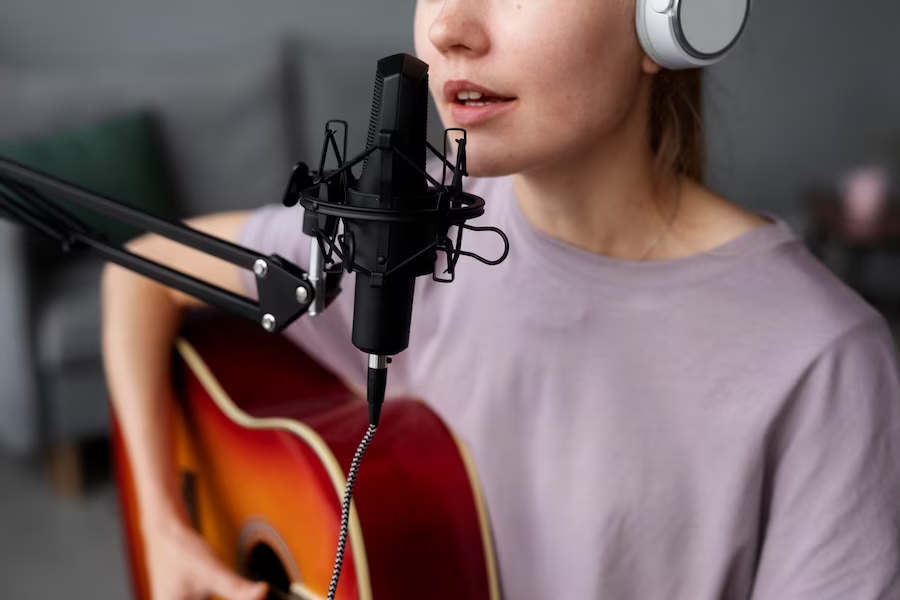Being able to discern pitch and intonation accurately is an invaluable asset for any musician. This skill, often referred to as having a “good ear,” allows you to understand and reproduce melodies and harmonies, and even recognize keys of songs just by listening. This article, written in easy-to-understand English language, will guide you through the steps to develop this auditory skill effectively. Despite common misconceptions, this isn’t an ability exclusive to some fortunate few. Rather, with commitment and the right learning tools, anyone can enhance their musical perception.
This guide is carefully designed to cater to both novice and expert musicians alike, offering an array of techniques and exercises to help augment your auditory prowess in the world of music.
Understanding Pitch and Intonation
Before we delve into the how, let’s first understand the what.
Pitch is a perceptual property of sounds that allows their ordering on a frequency-related scale. Simply put, it’s how high or low we perceive a sound to be.
Intonation, on the other hand, refers to the rise and fall of pitch in speech or music. It’s the variation of pitch that communicates differences in syllabic emphasis, emotional state, or even the type of a sentence (like whether it’s an affirmative sentence, a question, or an exclamation).
1. Start with Active Listening

To build your ear for pitch and intonation, you first need to sharpen your listening skills. Active listening involves focused, intentional listening to understand the nuances of pitch and intonation in music.
Here’s how to get started:
- Listen to different types of music: Try not to limit yourself to a single genre. The more varied the music, the better you’ll understand different pitches and intonations;
- Focus on individual instruments: Try to isolate a single instrument in a song and follow its progression throughout;
- Identify pitch changes: Listen for the moments where the pitch changes – either going up or down.
2. Practice Singing
Singing is a powerful way to improve your sense of pitch and intonation. Here’s how:
- Sing along with your favorite songs: This helps you match your pitch to the recorded pitches of the song;
- Record and listen to yourself: Recording your singing gives you a chance to listen to your pitch and intonation and find areas that need improvement;
- Use a tuner: A tuner can show you if you’re singing in the correct pitch. Start by hitting a note on a piano or guitar, then try to match that pitch with your voice.
3. Learn to Play an Instrument

Playing an instrument can drastically improve your ear for pitch and intonation. Here are some tips:
- Start with a fretless instrument: Instruments like the violin or the trombone require a good ear for pitch since there are no frets to guide the player;
- Practice scales: This helps you understand the relationship between different pitches;
- Play by ear: Try to play melodies that you know by heart. This can help you understand how pitch changes within a melody.
4. Use Training Apps
Several mobile and desktop apps can help you train your ear for pitch and intonation. Here are a few:
- Functional Ear Trainer: This app trains you to recognize notes by ear;
- Perfect Ear: An app that offers exercises on intervals, scales, and chords;
- Toned Ear: This web app provides ear training exercises for musicians of all levels.
5. Engage in Formal Ear Training
Formal ear training involves guided lessons, often as part of a music curriculum. Here are some components of formal ear training:
- Interval recognition: Identifying the distance between two pitches;
- Chord recognition: Recognizing the type of chord just by listening;
- Sight-singing: Reading and singing music at sight, often in a choir setting.
Conclusion
Developing your ear for pitch and intonation takes time, practice, and patience. It involves active listening, singing, playing an instrument, using training apps, and potentially even formal ear training. The journey can be challenging, but the reward—a deeper understanding and appreciation of music—is worth every note.
FAQ
It varies from person to person and depends on factors like natural aptitude, practice routine, and training method. However, with consistent and intentional practice, significant improvements can usually be seen within a few months.
No, it’s not necessary. Perfect pitch, or absolute pitch, is the ability to recognize a note without a reference. It’s a rare skill. Most musicians work with relative pitch, which is the ability to determine the pitch of a note relative to another.
Absolutely! While it’s often easier to learn musical skills at a young age, adults can also successfully develop their ear for pitch and intonation. It just might require a bit more patience and practice.